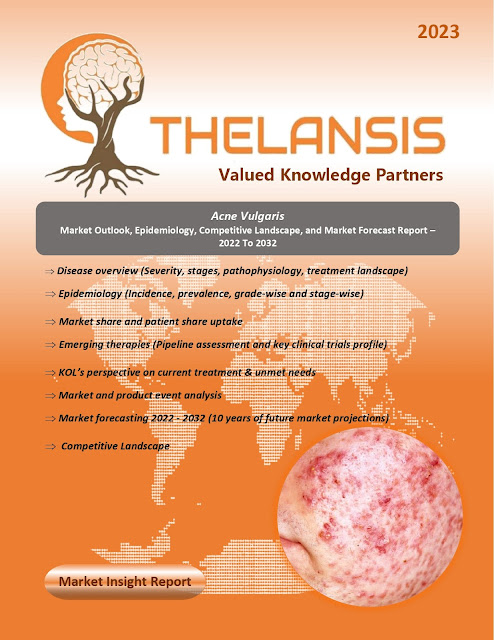Peripheral Arterial Disease (PAD) – Market Outlook, Epidemiology, Competitive Landscape, and Market Forecast Report – 2024 To 2034
Peripheral Arterial Disease (PAD) Market Outlook
Thelansis’s “Peripheral Arterial
Disease (PAD) Market Outlook, Epidemiology, Competitive Landscape, and Market
Forecast Report – 2024 To 2034" covers disease overview, epidemiology,
drug utilization, prescription share analysis, competitive landscape, clinical
practice, regulatory landscape, patient share, market uptake, market forecast,
and key market insights under the potential Peripheral Arterial Disease (PAD)
treatment modalities options for eight major markets (USA, Germany, France,
Italy, Spain, UK, Japan, and China).
Peripheral Arterial Disease (PAD)
Overview
Peripheral
Arterial Disease (PAD) is a chronic condition characterized by the gradual
accumulation of plaque in the leg arteries, eventually leading to restricted or
completely blocked blood flow. Risk factors for PAD include smoking, family
history of atherosclerosis, high blood pressure, diabetes, abnormal cholesterol
levels, advanced age, and a sedentary lifestyle. Symptoms of PAD encompass:
- Claudication: During walking, cramping leg pain, primarily in
the calf muscles.
- Resting foot pain as the disease progresses.
- Leg and foot coolness, numbness, or weakness.
- Poor wound healing in the legs and feet.
- Ulcers on the feet and legs due to reduced blood supply.
- Black discoloration around blocked arteries.
The
initial diagnostic test for PAD is the ankle-brachial index (ABI), which
measures blood pressure in the ankle compared to the arm. An angiogram,
typically via CT, MRI, or catheter-directed angiogram, is used to locate plaque
buildup in the arteries for treatment planning.
Geography coverage:
G8 (United States, EU5 [France,
Germany, Italy, Spain, U.K.], Japan, and China)
Insights driven by robust
research, including:
- In-depth interviews with leading KOLs and payers
- Physician surveys
- RWE analysis for claims and EHR datasets
- Secondary research (e.g., peer-reviewed journal
articles, third-party research databases)
Deliverables format and
updates*:
- Detailed Report (PDF)
- Market Forecast Model (MS Excel-based automated
dashboard)
- Epidemiology (MS Excel; interactive tool)
- Executive Insights (PowerPoint presentation)
- Others: regular updates, customizations, consultant
support
*As per Thelansis’s policy, we
ensure that we include all the recent updates before releasing the report
content and market model.
Salient features of Market
Forecast model:
- 10-year market forecast (2024–2034)
- Bottom-up patient-based market forecasts validated
through the top-down sales methodology
- Covers clinically and commercially-relevant patient
populations/ line of therapies
- Annualized drug-level sales and patient share
projections
- Utilizes our proprietary Epilansis and Analog tool
(e.g., drug uptake and erosion) datasets and conjoint analysis approach
- Detailed methodology/sources & assumptions
- Graphical and tabular outputs
- Users can customize the model based on requirements
Key business questions answered:
- How can drug development and lifecycle management
strategies be optimized across G8 markets (US, EU5, Japan, and China)?
- How large is the patient population in terms of
incidence, prevalence, segments, and those receiving drug treatments?
- What is the 10-year market outlook for sales and
patient share?
- Which events will have the greatest impact on the
market’s trajectory?
- What insights do interviewed experts provide on
current and emerging treatments?
- Which pipeline products show the most promise, and
what is their potential for launch and future positioning?
- What are the key unmet needs and KOL expectations for
target profiles?
- What key regulatory and payer requirements must be
met to secure drug approval and favorable market access?
- and more…



Comments
Post a Comment